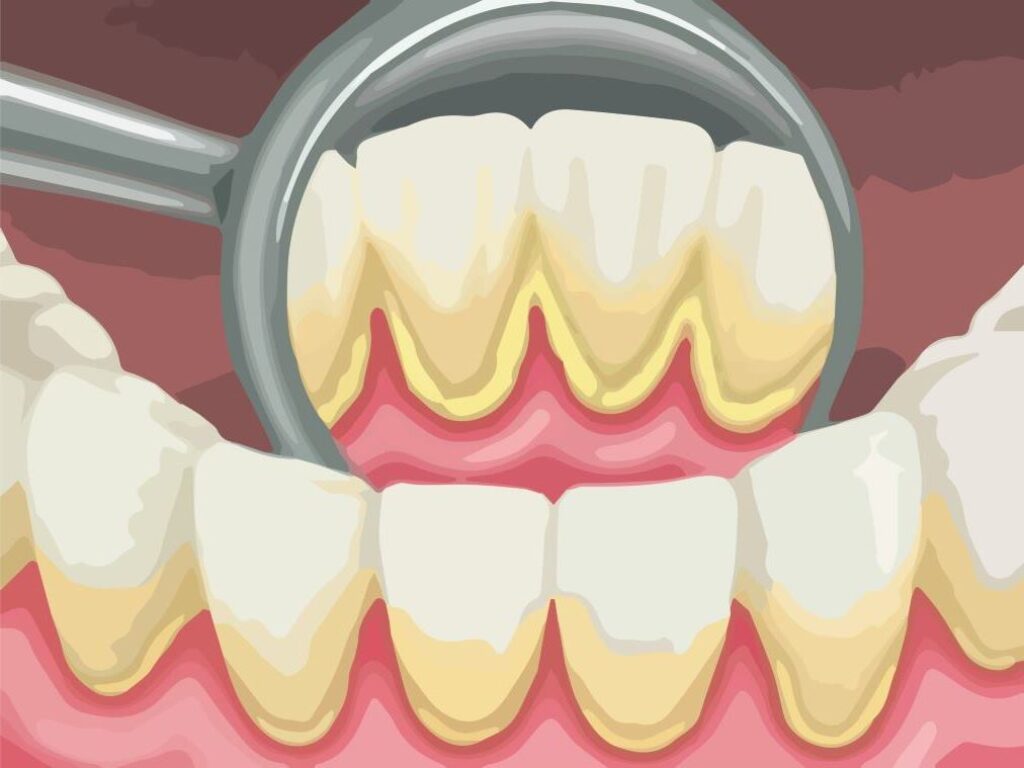What Is Calculus?
When dental plaque—a sticky film that develops on teeth due activities like eating and drinking—isn’t properly brushed and flossed away, it can combine with minerals in your saliva and eventually turn into calculus.
While plaque is easily removed with daily oral hygiene practices, calculus (or tartar, as it’s often called) is a hard substance that’s almost impossible to remove with brushing alone.
What Is a Calculus Bridge?
“A calculus bridge occurs when tartar or calculus builds up so much that it connects with the adjacent teeth and forms a solid ‘bridge’ of deposits,” explains Gary Schlotterer, D.D.S., founder of Digital Dentistry at Southpoint in Durham, North Carolina.
It often looks like “a border of brown or tan along the edge of your teeth by your gum line,” notes Gary Silverstrom, D.D.S., dentistry practitioner of the Silverstrom Group in Livingston, New Jersey. In more severe cases, a calculus bridge may extend down into the gum line or further up along the surface of the teeth, he adds.

Causes of a Calculus Bridge
Several factors can increase your risk of developing a calculus bridge, including:
- Poor oral hygiene
- Crooked or crowded teeth
- Smoking
Additionally, individuals (especially those who are older) taking certain medications such as those for high blood pressure, depression and bladder-control issues may find themselves dealing with a specific side effect known as dry mouth. Because saliva is a key component to overall oral health, individuals living with dry mouth may be more at risk for issues like calculus build-up and tooth decay.
Because calculus cannot be removed by brushing alone, allowing too much time between dental visits can also increase the risk of a calculus bridge. The more opportunity your dentist has to clean your teeth, the less calculus you will have. The less calculus you have, the less possibility there is for a calculus bridge to form.
Side Effects of a Calculus Bridge
Some degree of calculus buildup is normal and common, notes David Chen, D.D.S., dentist at Jackson Ave Dental in Long Island City, New York. However, an untreated calculus bridge can lead to side effects and the development of more serious conditions. “The most concerning side effect of a calculus bridge is its ability to induce gum disease,” adds Dr. Chen.
According to Dr. Chen, other potential adverse effects of a calculus bridge include:
- Halitosis (bad breath)
- Bleeding gums that are red and swollen
- Staining on the tartar that can turn it black or brown
- Gingivitis, a mild gum disease that causes inflammation of the gums
- Periodontitis, also called periodontal disease, which is a serious gum infection that can result in permanent bone loss around the teeth
How Is a Calculus Bridge Treated?
Only a licensed dental hygienist or dentist can remove a calculus bridge once it has formed.
“The process for removing mild calculus buildup is called a teeth cleaning, but a calculus bridge requires more than that,” explains Dr. Chen. Due to the fact that calculus can grow below the gum line, removing it requires a deeper cleaning, he says.
